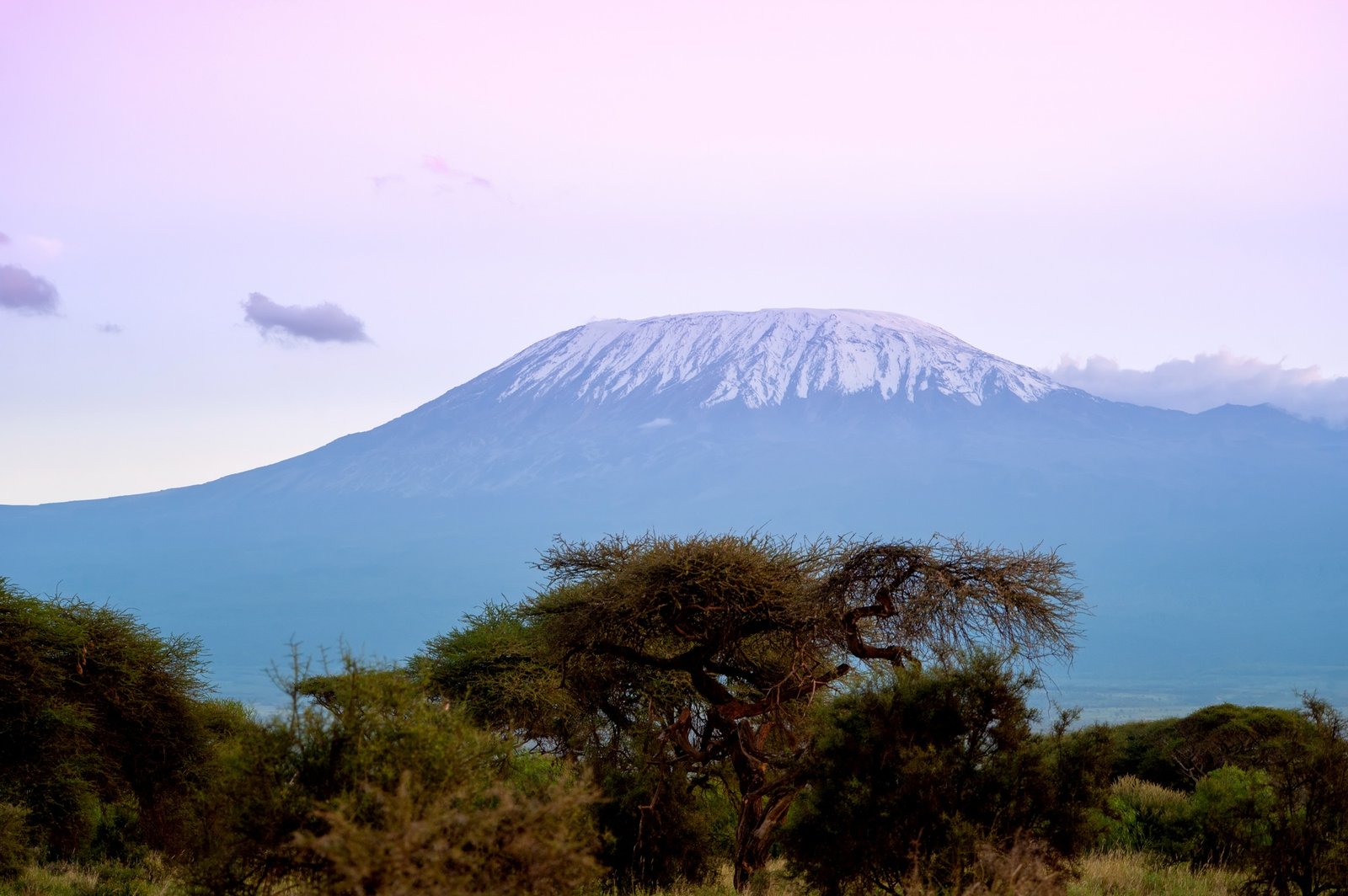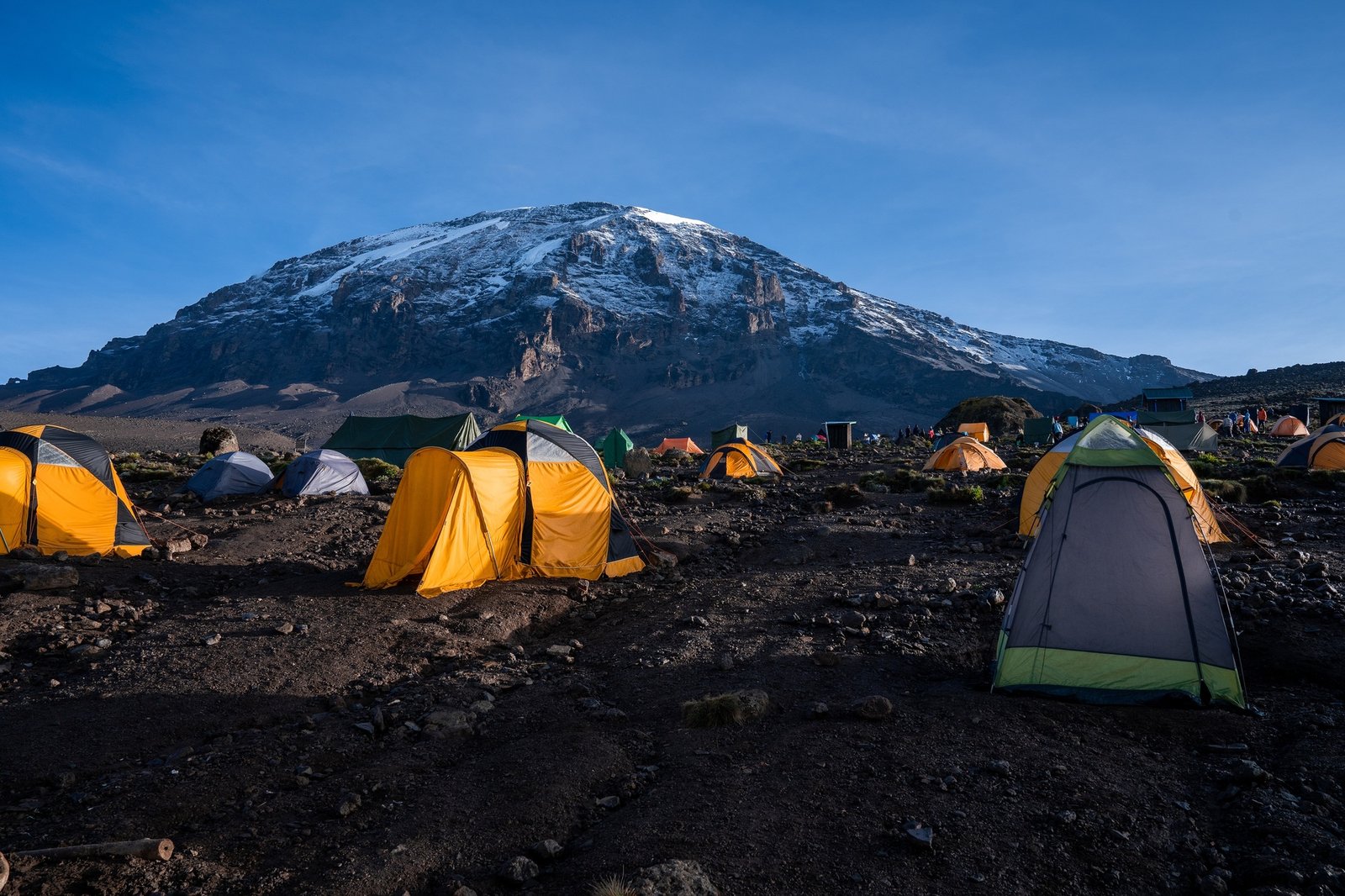


Embark on the ultimate Tanzania adventure with Bensin Safaris — combining thrilling wildlife safaris with a guided trek to the summit of Mount Kilimanjaro via scenic, off-the-beaten-path routes.
If you are after a life-changing experience and the bragging rights that come with conquering Africa’s highest peak, Bensin Safaris Tanzania is an expert at combining your East African safari itinerary with the summit of Kilimanjaro. True adventurers prefer the less-traveled Lemosho and Rongai routes, which are more remote, scenic, and peaceful than other more popular routes. We are highly qualified operators with experienced porters and guides to offer an unforgettable, personalized adventure to the roof of Africa.
Uhuru Peak, one of which starts on the Northern side of the mountain and the rest on the Southern side. The routes are Marangu, Machame, Lemosho, Shira, Rongai, Northern Circuit, and Umbwe.
Hiking Mount Kilimanjaro takes five to nine days to reach the Summit and then descend to the finishing point. The more days spent on Mount Kilimanjaro the more likely you will summit successfully because you will become more acclimated to the altitude.
Oversees tour operators’ conduct and porters’ management. According to KINAPA regulations, a climbing group of two trekkers will have one guide, one assistant guide, six porters (three for each climber), and one cook.
Porters responsible for carrying the trekker’s gear as well as items such as cooking supplies, tents, and water. This customary to tip guides and porters and the amount generally determines by the number of days on the mountain and the number of climbers in the group.
An added advantage of setting out at night is that the ground tends to be frozen, ensuring an easier walk over the usually loose gravel. Depending on your route, the push to the summit can take anything from one to two hours.
Generally a straightforward walk, though your route may require some scrambling (using your hands for balance and support) for short sections of fragmented rock.
is altitude sickness, which causes a third of climbers to turn back,” says Mr. Dickson, an experienced mountain guide with Benson Safaris Tanzania.
While Kilimanjaro is a non-technical climb, the extreme altitude, low temperatures, and occasional fierce winds mean all hikers must be physically fit, properly equipped, and well-acclimatized. The single biggest success factor on any Kilimanjaro trek is allowing yourself ample time to adjust to the elevation. All routes have rangers and rescue facilities to assist those affected by altitude sickness.
travelers can summit during the day and avoid the midnight rush. You will have time to explore the crater and the glaciers and can get back to the rim early the next day to see the sunrise. You may encounter snow on your 1-hour ascent to the summit of Uhuru peak where you will be officially certified and celebrated for successfully conquering the roof of Africa.
Let us tailor you dream safari!
EXCELLENTVerified An incredible experience with a small downside Our 7-day adventure was truly unforgettable, featuring waterfalls, ponds, lakes, a safari, a hot air balloon ride, and even flights and boat trips. The highlights of our safari included Ngorongoro Crater, Central Serengeti, and Northern Serengeti, which were absolutely breathtaking.Benson Safaris did a fantastic job organizing the entire trip and making sure everything went smoothly. A special thanks to Zablon, our tour guide, who was more than just a guide—he was an adventure partner! He was kind, attentive, and instrumental in ensuring we saw the Big Five, along with countless other amazing animals. We celebrated together, shared meals, and enjoyed beers under the African sky. It was a fantastic experience, and Zablon played a huge role in making it special.The only downside was the flight from Serengeti (Seronera airstrip) to Zanzibar. Despite our early planning and multiple communications well in advance, the flight tickets were purchased too close to the departure date. As a result, we had to take three separate flights on the same day, instead of the direct flight we had hoped for. This added unnecessary stress and made our journey to Zanzibar more tiring than expected. We essentially lost almost an entire day in transit, which was frustrating, especially after such an exciting safari.But all in all, it was an incredible trip. The minor flight issue didn’t overshadow the incredible experiences we had. Highly recommend Benson Safaris for anyone looking to explore the wonders of Tanzania!Posted onVerified Benson Safaris - top notch on all levels My husband and I had the most amazing experience in Tanzania. Benson and his team took care of all the details. We just had to show up, relax, and enjoy. We are very particular about our accommodations and every location exceeded our expectations. Our driver, Francis, made the experience "next level". He was knowledgeable with identifying the animals, providing historical context of the regions and culture. He also had a keen eye for spotting animals. Most importantly, he was very patient and expertly navigated the rugged terrain in a safe way.In addition to the safari, Benson organized our stay in Zanzibar. Again, he connected us with excellent drivers and tour guides who made our beach stay enjoyable. We ran into a small challenge at the hotel in Zanzibar and we called Benson. He took care of it and it was a huge relief for us.We highly recommend Benson Safaris.Posted onVerified Unforgettable Only 3 days and 2 nightsThe already short time could have been better exploitedBut beautiful experience and talk even if we have not been in the most famous Serengeti Great guide and accommodationPosted onVerified Great time, great guide Francis, Thanks Fortune for organizing, we made memories of a lifetime We decided to book our honeymoon with Benson Safaris (8 days of safari, 4 days in Zanizbar)Everything was perfectly prepared. All chosen lodges were clean and comfortable. The days were well organized and planned. Our guide Francis was so dedicated and knowledgeable, because of him we managed to have so many beautiful experiences and see wildlife in action. Our operator Fortune was also very good and professional, responsive and was helplful from the day we started planning till the day we came back. Very very recommended to go with Benson SafarisPosted onVerified Great and knowledgeable tour and safari guide! Our tour group comprised of 3 couples: our age range was mid-50s to early 80s. From the beginning of planning 9 months prior to our trip, Benson Safaris gave us great ideas, always receptive and answered our queries promptly. I am a person with limited ambulation as I have two prosthetic limbs but our tour guide and driver, ZABLON, went beyond to make sure I am cared for: providing a foot stool so I can safely get in the safari vehicle, driving near washrooms and our tented campsite so i won’t have to walk farther and so on. He is very knowledgeable and patient, explaining all the animals. He made sure to explore as best as he can to maximize our experience. Benson Safaris also made arrangements for us to enjoy Zanzibar. I highly recomment Benson Safaris to people who want to experience this once-in-a-lifetime adventure.Posted onVerified Excellent We had a great experience with Benson Safaris. Our safari driver, Zablon was so caring and helpful to our senior citizens group. We highly recommend this company. We had an experience of a life time. Thank you Benson, Zablon for your excellent services. Subhash MinochaPosted onVerified Outstanding Tanzania safari (6 days) Thanks to Benson Safari for making this happen. Appreciate the prompt communication prior to our trip and willingness to work with me in building a customized itinerary to meet our needs. Thanks to Mr Benson, Grace and Paul Balthasar Ngoty, our driver and guide. 1) Witnessed absolute magic at Mara River in Northern Serengeti. Saw multiple wildebeest crossings across the river on Aug 20 and 21. From Kenya back to Tanzania. Early for this time of year. Great stay at Aurari tented camp, about 45 minutes from the river (will post separate review under Aurari). 2) Enjoyed our stay at Serena lodge in Central Serengeti, 3) Miracle Air balloon ride was fantastic….saw lions, elephants and lots of deer and zebras (will try to post separate review). 4) Magic again inside Ngorongoro crater (witnessed a lioness kill a wildebeest) with a 2 day stay at Serena in Ngorongoro (will try to post separate review), 4) Finally stopped by at a Masai village (will try to post separate review if possible under Paulo Emanyata, name of village, with young Chief Paulo giving us a grand tour) on the way back to Arusha and onto Kilimanjaro.Make sure you have a good pair of binoculars and a good camera w a powerful zoom lens (400mm).Vegetarian food is not an issue at all the lodges and camps. The Chefs were extremely flexible and worked with us to provide great Indian vegetarian food.; even food without garlic if that’s in line with your liking. Be prepared for rugged terrain (bouncy) with a lot of dust. Have a lot of patience and rise up early and be prompt with your multiple game drives. Request lodges to pack lunch daily for you; this way you maximize your time spent on watching the crossings or going on game drives. Great country - Tanzania and great people. Loved every day of our stay.Finally don’t forget to buy Napenda (“ I like” in Swahili) coffee from Mr Benson. He owns a coffee farm. Asante sana ( picked up some Swahili and people thought I was a local.)Posted onVerified GREAT EXPERINECE - RECOMMEND We had already second experience with BENSON SAFARIS and again great. All was perfectly organized and program was one big experience. Our guide Liberatus was friendly, experienced and taking care about us each day. We saw all big animals, big 5 and many othres. Accomondations were fantastic experience and very good foood. I RECOMMED BENSON TO ALL TRAVELLERS. MarekPosted onVerified An unforgettable safari experience We took a family trip of five with Benson Safari, and it was filled with joy and wonderful surprises, not only from the breathtaking beauty of Mother Nature, but also from the amazing people we met along the way.From the very beginning, the booking process was smooth and stress-free. Grace and Benson were both incredibly patient and professional. They carefully listened to our needs and drafted a customized itinerary that perfectly fit our schedule.Because we traveled across both Kenya and Tanzania, we had different guides in each country, and all of them are nice people to work with. Special thanks to Edmund and Obi, who are both knowledgeable, fun, patient, and wise. If you have the chance, I highly recommend spending as much time with each guide as possible. Through our conversations and shared moments, we came to appreciate not only their skill as guides, but also their depth as individuals. They shared insights that helped us avoid unnecessary hassles, and their exceptional talent for spotting wildlife made every game drive unforgettable.This was our very first safari, and it truly exceeded our expectations. As we kept saying throughout the trip: we will definitely return for a second safari and when we do, Benson Safari will be our choice again.Posted onVerified 10/10 experience ! One of the best and most memorable experiences of my life! The safari was incredible from start to finish. Huge shoutout to Liberatus, our tour guide, who was amazing. His knowledge and passion made the experience 10 times better. He went above and beyond to make sure we had the best possible adventure. Highly recommend this safari !
WhatsApp us